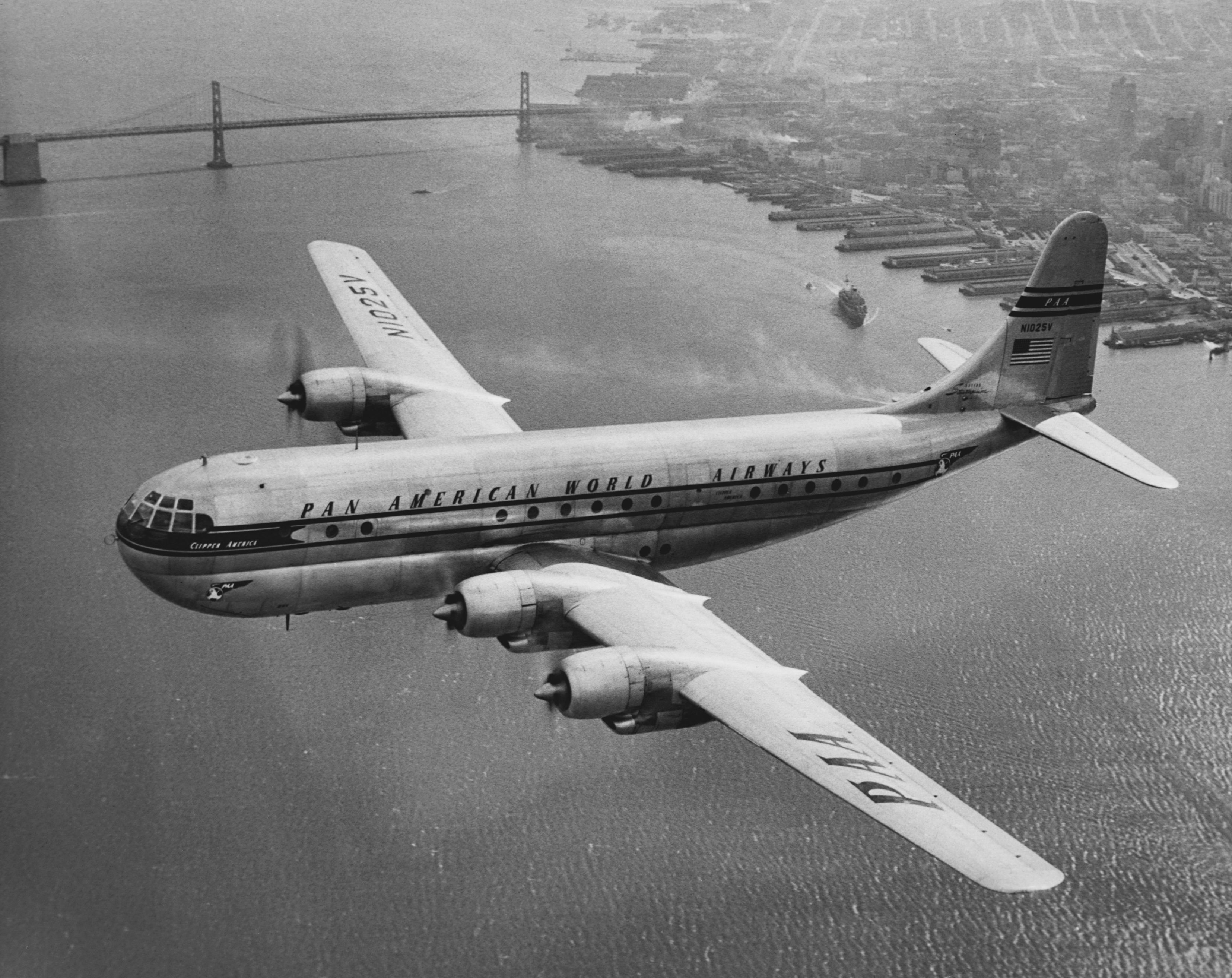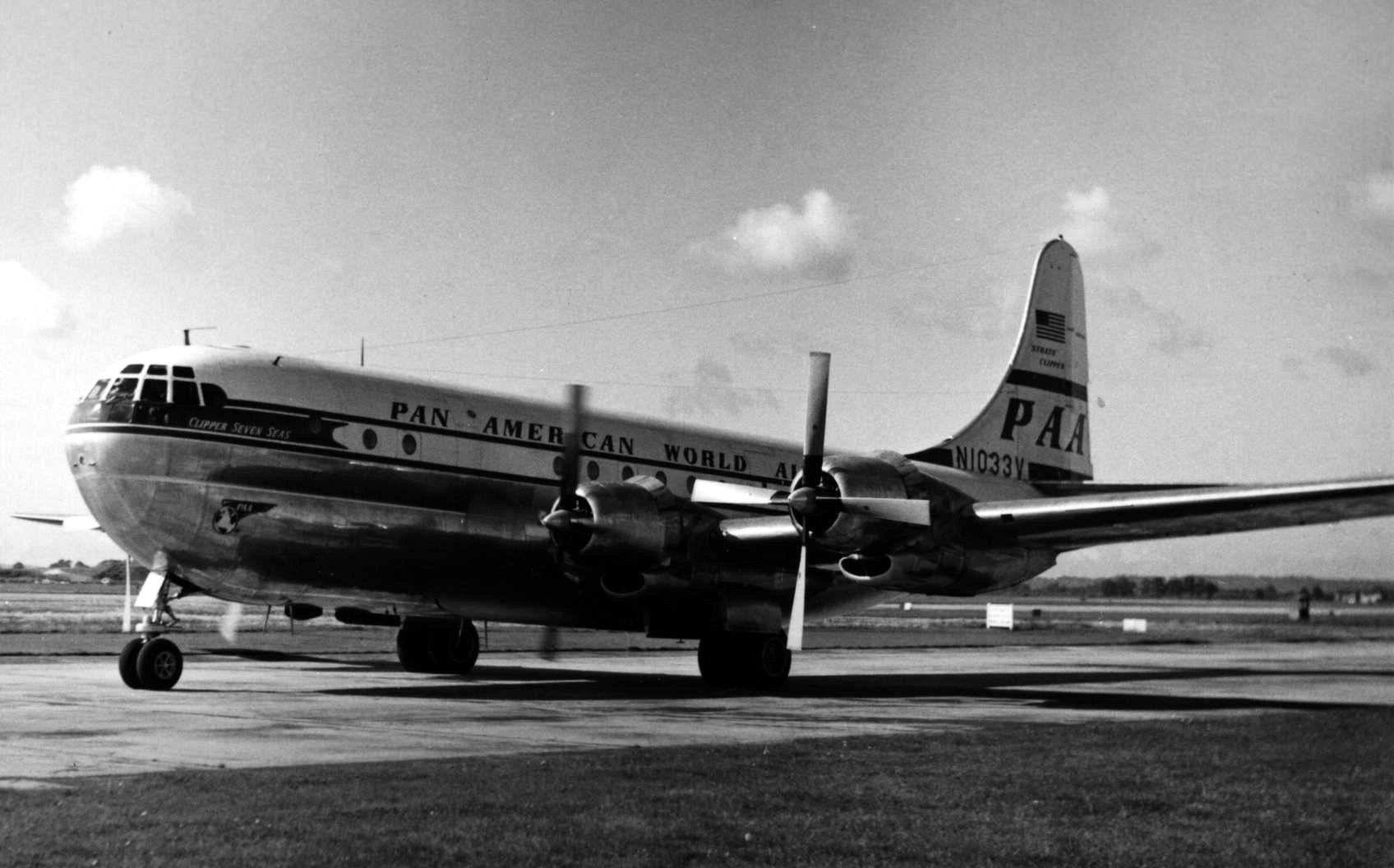All 31 occupants of a Pan American Boeing 377 Stratocruiser 10-29 survived a ditching in the Pacific Ocean after two of the plane's engines failed on October 16th, 1956. The events went on to become an international story that was documented in several books and movies.
Trouble across the Pacific
Pan Am Flight 6 was an around-the-world trip that started in Philadelphia on October 12th. The leg between Honolulu and San Francisco was conducted by a 377 Stratocruiser holding registration N90943. Nicknamed Sovereign of the Skies, the Clipper left Hawaii at 20:26 HST on October 15th.
The plane's #1 engine started to overspeed after reaching FL210 at 01:19 on October 16th. Airspeed reduction did not assist the issue, and the engine was cut. The plane lost altitude, and ditching became imminent.
The flight crew consisted of Captain Richard N. Ogg, First Officer George L. Haaker, Navigator Richard L. Brown, and Flight Engineer Frank Garcia Jr. They contacted the US Coast Guard at Ocean Station November between Hawaii and California at 01:22 before climb power was applied to the remaining engines. However, engine #4 only developed some of its power at full throttle. Nonetheless, the aircraft managed to maintain an altitude of 5,000 ft at 135 kn. At 02:35, the #engine finally failed, and a second propellor was feathered.
Captain Ogg decided to fly an eight-mile circuit above the 255-foot USCGC Pontchartrain until the morning while planning for the water landing. He remembered that another Pan Am Stratocruiser that ditched had its tail break off. Thus, he asked passengers at the back and near the engine to move forward.
Flight Engineer Garcia noted that when the travelers heard that the plane would circle and not land in the dark, they gained confidence and comfort knowing that someone was below waiting to help.
Stay informed: Sign up for our daily and weekly aviation news digests.
Quick response at sea
As Captain Ogg had expected, as soon as the aircraft hit the water, the back end broke off. The plane’s nose then went under.
Mr Garcia, who was in the cockpit when the ditching happened, shared the following, according to The New York Times:
“I felt as if somebody had grabbed the seat of my pants and was pulling. I saw the water. I was more frightened if the windows broke, then the water would come in. I can’t tell you how many seconds, it was less than a minute, and I saw the water receding (as the front of plane surfaced).”
Rescue vessels then swiftly made their way and transferred everyone away from the sinking plane. All passengers were saved, including twin toddlers Maureen and Elizabeth Gordon.
The crew of the cutter even filmed footage of the landing.
Praise for the crew
The Boeing 377 Stratocruiser’s crew members received awards for their efforts during Pan Am Flight 6. Notably, Captain Ogg was the first to receive the Civilian Airmanship Awards presented by the Order of Daedalians. The incident is joined by other valiant maneuvers in aviation history, such as the Miracle on the Hudson.
What are your thoughts about what occurred on Pan Am Flight 6 in 1956? How do you feel the situation was handled? Let us know what you think of the overall incident in the comment section.
Sources: Aviation Safety Network; The New York Times


